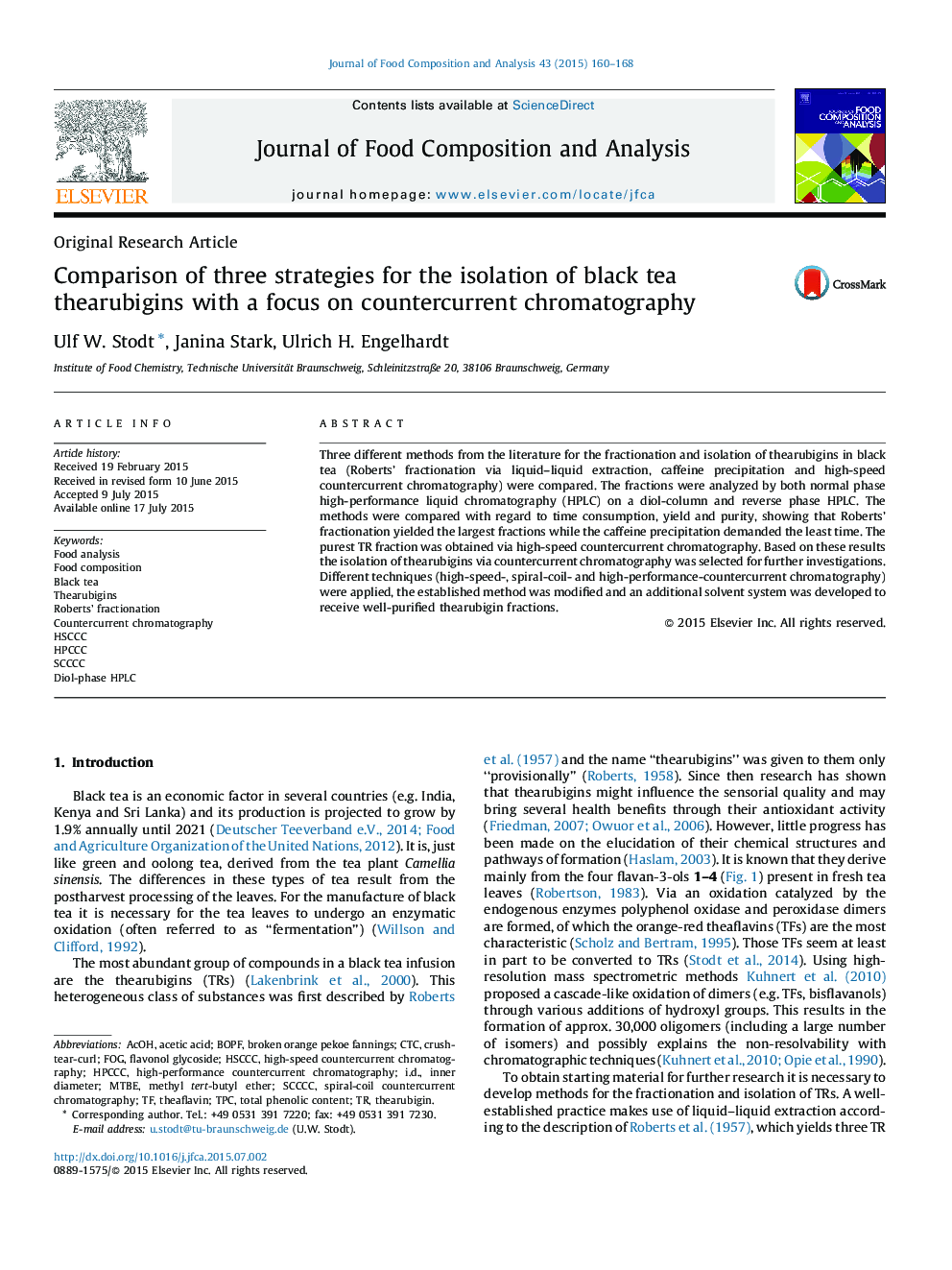| Article ID | Journal | Published Year | Pages | File Type |
|---|---|---|---|---|
| 1218090 | Journal of Food Composition and Analysis | 2015 | 9 Pages |
•Caffeine precipitation yields thearubigin fractions fast and with good purity.•Countercurrent chromatography delivers purest thearubigin fractions.•Isolation of thearubigins via countercurrent chromatography improved.•Normal phase HPLC using a diol stationary phase introduced for thearubigin analysis.•High-speed-, high-performance- and spiral-coil-CCC used for thearubigin isolation.
Three different methods from the literature for the fractionation and isolation of thearubigins in black tea (Roberts’ fractionation via liquid–liquid extraction, caffeine precipitation and high-speed countercurrent chromatography) were compared. The fractions were analyzed by both normal phase high-performance liquid chromatography (HPLC) on a diol-column and reverse phase HPLC. The methods were compared with regard to time consumption, yield and purity, showing that Roberts’ fractionation yielded the largest fractions while the caffeine precipitation demanded the least time. The purest TR fraction was obtained via high-speed countercurrent chromatography. Based on these results the isolation of thearubigins via countercurrent chromatography was selected for further investigations. Different techniques (high-speed-, spiral-coil- and high-performance-countercurrent chromatography) were applied, the established method was modified and an additional solvent system was developed to receive well-purified thearubigin fractions.
